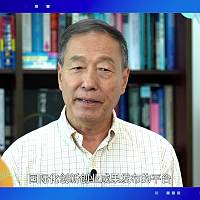The Rise of ESG Investing in China
BEIJING, September 18 (TMTPOST) -- In new guidelines issued on September 12, China’s State Council proposed to set up a green stock index and develop futures trading for carbon emission rights. This is the country’s latest regulatory move on utilizing capital markets to achieve the goal of carbon neutrality by 2060.
Since Aegon Industrial Fund Management Co launched the first domestic ESG mutual fund in 2008, ESG has long been perceived as just a “slogan”. ESG investing has only taken off in the past year with both the number of ESG funds and their asset under management (AUM) growing.
The main driving forces behind the change are the regulatory push and the opening-up of China’s capital markets.
Regulatory push for green growth
The biggest catalyst for ESG investing to gain momentum came last September when Chinese President Xi Jinping announced at the General Debate of the UN General Assembly that China aims for carbon emissions to peak by 2030 and to reach carbon neutrality by 2060.
Shortly after Xi’s speech, China released its 14th Five-Year Plan, in which the government vowed to raise standards of environmental protection and encourage technology-led innovation to achieve sustainable growth.
Being the world’s largest CO2 emitter, taking up a share of almost 30%, China has huge room for carbon reduction. The majority of China's carbon emissions come from industrial production, which means carbon neutrality by 2060 is a feasible goal if China executes the plan of transforming energy-intensive industries and developing new energy.
The top-level regulatory push served as a wake-up call for ESG investing. This year, the market has developed a consensus that domestic companies will transform, to various degrees, to a lower-carbon model, and industries that help with carbon reduction will grow at high speed in the comings years, carbon neutrality has become one of the most important themes in the A-share market. Funds that capture the trend have outperformed this year.
The data of China’s National Bureau of Statistics (NBS) reveals, while more than 70% of China’s electricity was generated by coal-fired power plants in the first half of 2021, renewable energies, especially solar and wind power are growing at a double-digit pace.
Two-digit Growth for Wind and Solar Power Installed Capacity in 1H 2021
Endorsed by the government’s commitment to green growth, many Chinese companies with technological innovation, growing economy of scale, and management efficiency stand to be beneficiaries of carbon reduction.
Over the years, China has built a complete supply chain in the solar energy industry and solar equipment makers hold significant pricing power. Two of the best performing A-share listed companies in the past year, Longi Green (601012 CH) and Tianjin Zhonghuan Semiconductor (002129 CH), for instance, are the world’s first and second-largest supplier of photovoltaic mono wafers and have over 70% combined market share globally.
Another sector that can benefit from the long-term trend of carbon neutrality is green transport. China is the largest consumer and producer of new energy vehicles (NEV) in the world.
According to the data from the China Association of Automobile Manufacturers (CAAM), in the first seven months this year, the number of production and sales of NEVs both doubled compared to the same period of 2020. In July, almost 15% of cars sold in China were NEVs.
Tesla's giga-factory in Shanghai has also helped with the development of the NEV supply chain in China. Contemporary Amperex Technology (300750 CH), the world’s largest EV battery producer and Tesla’s supplier, has also benefitted from the global renewable energy trend. The stock is arguably the favorite of ESG fund managers and has delivered handsome returns.
Globalization raises companies’ ESG awareness
The opening-up of domestic capital markets has helped raise the ESG awareness of onshore listed companies.
MSCI indices began to include A-share in its Emerging Market index in 2018. As of the end of June 2021, there were 481 A-share companies in the MSCI EM Index, accounting for approximately 5%.
Meanwhile, foreign investors have gained wider access to Chinese securities via channels such as the Stock Connect, the Bond Connect, the expanded Qualified Foreign Institutional Investor (QFII) program, and direct access to the interbank bond market.
According to the data from China’s State Administration of Foreign Exchange (SAFE), by the end of 2020, foreign investors’ holding of domestic equity securities was US$542 billion, accounting for 5.3% of the total market capitalization of A-shares, up by 1 percentage point compared to 2019.
With China’s A-shares marketing becoming more international, there is increasing attention from foreign institutional investors on Chinese companies’ ESG records. The rising scrutiny has induced a positive trend of voluntary ESG reporting by Chinese businesses.
According to a research report of PwC, as of mid-2020, 1,021 companies, or 27% of all listed in the A-share market, published annual ESG reports, compared to just 371 in 2009. The percentage of ESG reporting among CSI 300 companies reached as high as 86%, matching the 90% rate among S&P 500 companies.
Challenges for ESG fund managers
The international practice of ESG investing has shown that companies with high ESG performance relative to their sector peers tend to generate excessive returns in the long term. Most onshore fund managers also acknowledge ESG as a source of alpha.
According to East Money, there are currently 160 onshore ESG mutual funds, of which the total AUM has increased by 11% within the first half of 2021. However, to what extent these funds take an authentic ESG approach in the investment process, is questionable.
According to a 2018 survey conducted by the Asset Management Association of China (AMAC), Chinese asset managers understand ESG issues but lack a systematic approach to incorporate them into the investment process. A lack of reliable disclosure, subpar ESG data quality, and inadequate third-party research were highlighted as challenges to ESG integration.
Three years on, QuantData's recent research finds the challenges remain.
First of all, QuantData (秩鼎) only included 80 funds in the research scope, as the rest don’t completely incorporate the three elements of "environment", "social" and "governance" in the investment process.
Secondly, by looking into the reports of 66 onshore ESG funds in the second quarter of 2021, Quanta hasn’t found one single undisputed ESG leader among the top-ten holdings of these funds according to the standards of domestic and international rating agencies. The ten stocks scatter in new energy, internet, consumer, financial and industrial sectors, among which some stocks, such as Kweichow Moutai, have very little to do with the ESG theme.
While domestic fund managers lack reliable ESG data and some international ESG rating models may not directly apply to A-share companies, some companies have developed proprietary ESG analysis tools.
PRI’s whitepaper reveals the ESG investment practice of some of its members in China. For instance, E-Fund and Hwabao leveraged their perceptions of environmental risks and company management capabilities to enhance their understanding of industry competitive dynamics. Harvest applied a proprietary ESG framework and methodology to conduct quantitative ESG analysis across the A-share market.
There is also an example of international cooperation. Last March, NN Investment Partners launched a China ESG UCITS fund with ChinaAMC. ChinaAMC is responsible for bottom-up stock picking and ESG engagement with Chinese companies, while NN IP advises on ESG global standards, processes, and integration.
In terms of listed companies’ ESG disclosure, only public companies in high-pollution sectors are now required to disclose their environment-related data. Early this year, the China Securities Regulatory Commission (CSRC) proposed to add ESG information to a list of issues that listed companies should disclose. Professionals in the asset management industry expect the ESG disclosure requirement to apply to all A-share companies in one or two years.
The trend of ESG investing is unfolding in China. With the endorsement from the top-level regulators and improved ESG disclosure of listed companies, Chinese fund managers can be expected to catch up to global peers in ESG investing practice in the years to come.
更多精彩内容,关注钛媒体微信号(ID:taimeiti),或者下载钛媒体App

钛媒体 App
13965篇文章TA的动态
2022-09-14 钛媒体 App发布了 《星巴克加码中国市场,未来三年要新增开3000家门店|钛快讯》的文章
2022-08-11 钛媒体 App发布了 《白云山麾下公司虚抬药价“把戏”,被拆穿了》的文章
2022-07-06 钛媒体 App发布了 《为了帮00后卷王找到工作,简历修改师们拼了》的文章
2022-07-06 钛媒体 App发布了 《威尼斯向游客收“进城费”,国内城市如何借鉴?》的文章
2022-03-25 钛媒体 App发布了 《蔚来2021年财报发布:年营收361亿元,整车毛利率达到20.1%》的文章


























